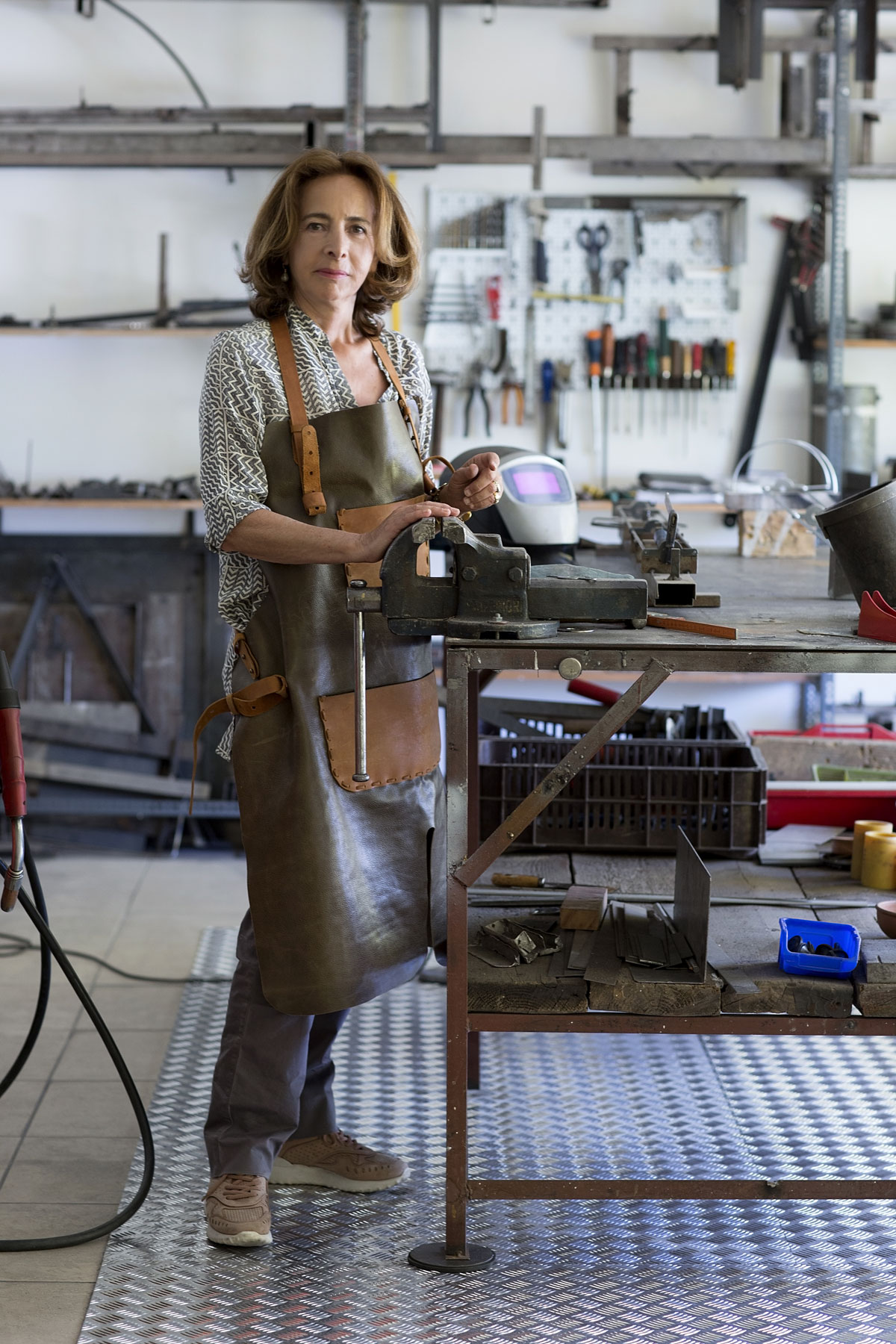No products in the cart.

ALEXANDRA TSOUKALA
I am a Greek designer. Since 1992 I design and manufacture in my studio hand-made lighting outfits, furniture, art objects, jewellery, and fashion accessories. My creations are sold in many outlets globally, and my fashion accessories can be found in 90 shops of major Art Museums around the world.
ABOUT DESIGNING
I began designing empirically, through my materials. Which means I immediately start constructing my objects, because I like to see them take their real “live” shape directly.
The essence of my work’ s goal is that the objects must be useful and their materials recognisable. The construction must be clean-cut and its shape a logical result of its construction and materials. As I don’ t like fake pockets and purely decorative buttons, so I don’ t like materials masquerading as something else, i.e., aluminum as “wood”, or plastic as “marble”. Often, I add some playfulness, but I never lose sight of my initial aim, which is to answer to the specific need for which the object is being made – as simply and self-evidently as primitive people used to make their utensils, tools, and houses. With this same logic I design all objects, using contemporary materials, following the latest techniques, and trying not to be carried away by the mass of pictures in magazines and tv about the fashionable new “trends”. (What, really, is the meaning of trends? Could it be simple mimicry?) Why should we produce something “different” only because it needs to be “different”? A chair that offers, through some new technology, more comfort, is indeed an important and original proposition; but an “imaginative, different” chair in which one cannot sit comfortably, is just nothing.
In the past, objects were made to last. Now we throw them away and quickly buy new ones.
Over-consumerism is a bad stepping-stone for designers, and it also produces a pitiful and useless heap of garbage. We spend more, but I’ m not sure we live better. So, for me, a good design is a balanced combination of many factors: of a useful object in a well-proportioned shape and, of course, at an “honest” price.
COLOURS
For my lighting outfits, colour is inseparable from shape. I always start with white, the way one starts by sketching on a blank canvas. Later on, when the object has acquired its definite shape, I decide what other colour might be added.
For my fashion accessories I enjoy trying all sorts of combinations. I sometimes am inspired by the earthy shades of the ancient Greek painter of the 5th century BC. Polygnotos, and at other times by all the shades of blue-green, or by really exorbitant, gaudy combinations. And there’ s always the element of surprise, when (as often happens) some colours are spread out at random on my working bench and I cry out, “how beautiful, let’ s do that!”.

INSPIRATION
Inspiration is a combination of many things. But most importantly, for me, it emerges from the materials I use, from the markets and from life itself.
When I first held in my hands a jersey cloth, I instantly remembered Martha Graham’s famous choreography, where her dancers moved inside tubes made from the same jersey material, their dancing surmised seductively. I was totally charmed by the spectacle and it stayed in my memory. My first lighting outfits, therefore, were iron frames dressed in this same material. Later, a pleated material inspired me with its elasticity, its play with light and shade and the shimmering dance of its pleats for a new lighting design. Another time I spotted, in one of the shops where I buy my materials from, a plastic stiffener that inspired some new shapes. How could I have possibly imagined all these had I not come across the materials? It’ s like opening a window, looking out, seeing there’ s another one further on, opening it, seeing more, and so on. Wonderful surprises keep appearing and it is fascinating. Of course, at some point the windows stop and one must find something new to «open»; not be carried away by what becomes easy and therefore a «manner». Because we all tend to give way to the easy repetition of a success, maybe a little bit differently but with no real reason to repeat it anymore, and then it becomes boring and uninteresting. Only as long as we keep being informed of new materials and techniques that come up, will we be able to produce fresh, original designs.
FASHION ACCESSORIES
I once designed a necklace for myself by using the same pleated material I used for my lighting units. I wore that necklace, and everyone asked where I got it and if they could have one just like that. That first necklace was so successful that it still sells today in 60 different colour combinations. It was the beginning of my fashion accessories range, that allowed me to collaborate with the art shops of 90 Museums worldwide and to produce more jewelry (bracelets, earrings) and scarfs, bags, etc. Most of them are made with that same material because its pleats give this three-dimentional, shimmering, elastic, light-and-shade fascinating quality.
THE COMPANY
My studio is called minimum design because all designs and constructions are based on what I consider the bare necessity –not in the sense of today’s fashionable “minimum trend”, with bare empty houses and everything hidden away in closets. I believe in and propose only what is needed; no more, no less.
PRIZES
For the lighting design CLIT the «Certificate of Excellence» award of the German Committee of German Manufacturers, at the FORM 2008 Contest. Competition of the Frankfurt «Tendence» Exhibition.
If you want to know more about me and my work feel free to check out my interviews

